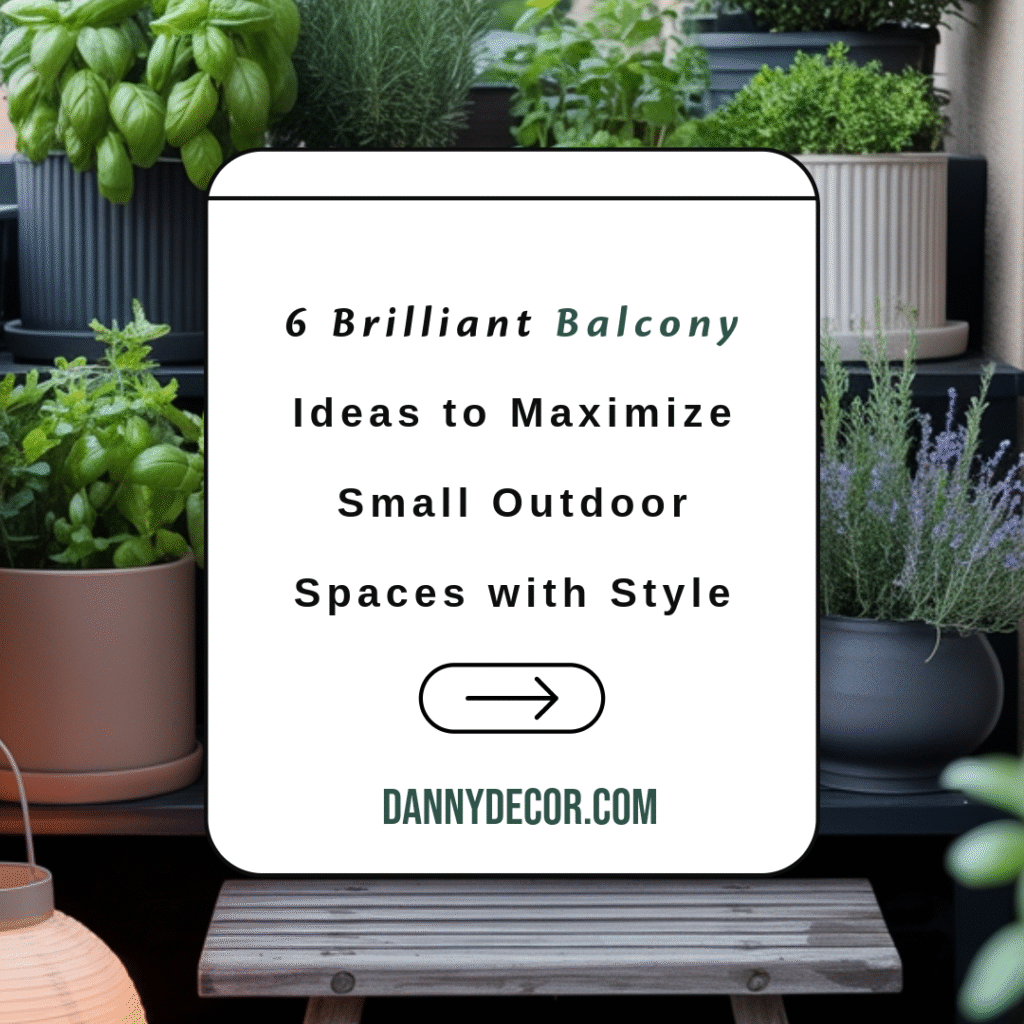
Your balcony holds untapped potential. Whether you’re sipping morning coffee or unwinding after work, this compact outdoor space can become your personal retreat. Many apartment dwellers overlook their balconies, treating them as storage areas rather than extensions of their living space.
The key to balcony transformation lies in smart design choices that maximize both function and beauty. Small spaces demand creativity, but they also offer intimate settings that larger patios cannot match. With the right approach, even the tiniest balcony can feel like a luxury outdoor room.
Why Your Balcony Deserves Attention
Urban living often disconnects us from nature and fresh air. Your balcony bridges this gap, offering a slice of the outdoors without leaving home. Research shows that spending time in outdoor spaces, even small ones, reduces stress and improves mental well-being.
Most balconies remain underutilized because people assume they need extensive renovations or large budgets. The truth is simpler. Strategic additions and thoughtful arrangements can create dramatic transformations using modest investments and weekend projects.
The Foundation: Setting Yourself Up for Success
Before diving into specific ideas, consider your balcony’s unique characteristics. Sun exposure affects plant choices and furniture materials. Wind patterns influence where you place lightweight items. Privacy levels determine seating arrangements and screen placement.
Measure your space carefully. Small balconies require precise planning to avoid overcrowding. Choose a color palette that reflects your interior style while considering how different hues appear in natural light throughout the day.
Weather resistance should guide every purchase decision. Outdoor elements are unforgiving, and replacing damaged items becomes costly. Invest in quality pieces that will maintain their appearance through multiple seasons.
1. Create Living Privacy with Vertical Gardens
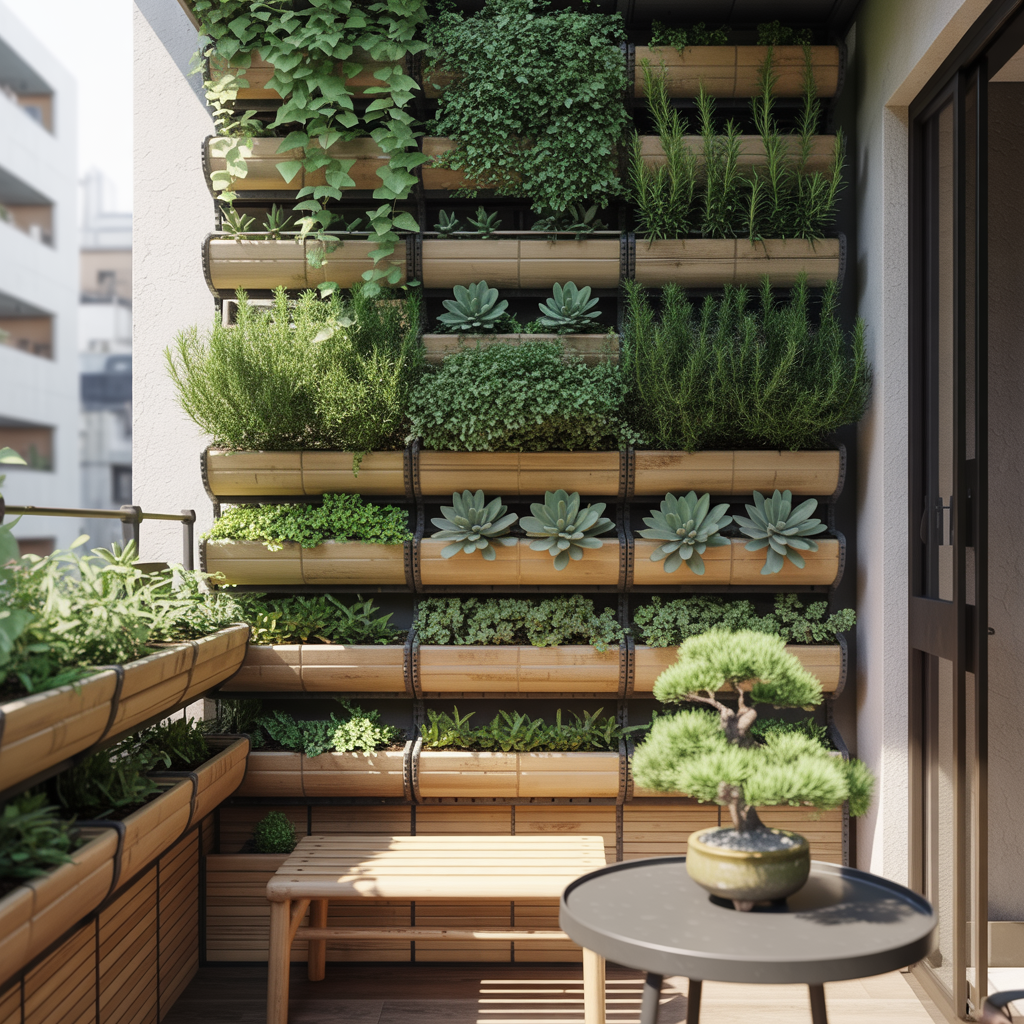
Privacy often tops the list of balcony concerns, especially in densely populated areas. Vertical gardens solve multiple problems simultaneously. They block unwanted views while adding natural beauty and improving air quality around your space.
Wall-mounted planters work well for herbs and small flowering plants. Trailing varieties like ivy or pothos create natural curtains that soften hard architectural lines. Modular systems allow you to adjust height and coverage as plants mature.
Consider maintenance requirements when selecting plants. Succulents need minimal watering, making them perfect for busy lifestyles. Herbs provide both privacy and fresh ingredients for cooking. Flowering vines add seasonal color changes that keep your balcony interesting year-round.
Position your vertical garden to block the most problematic sight lines first. You can always expand the system later as your confidence and plant collection grow. Start with hardy varieties that forgive occasional neglect while you develop your green thumb.
2. Maximize Seating with Multi-Functional Furniture
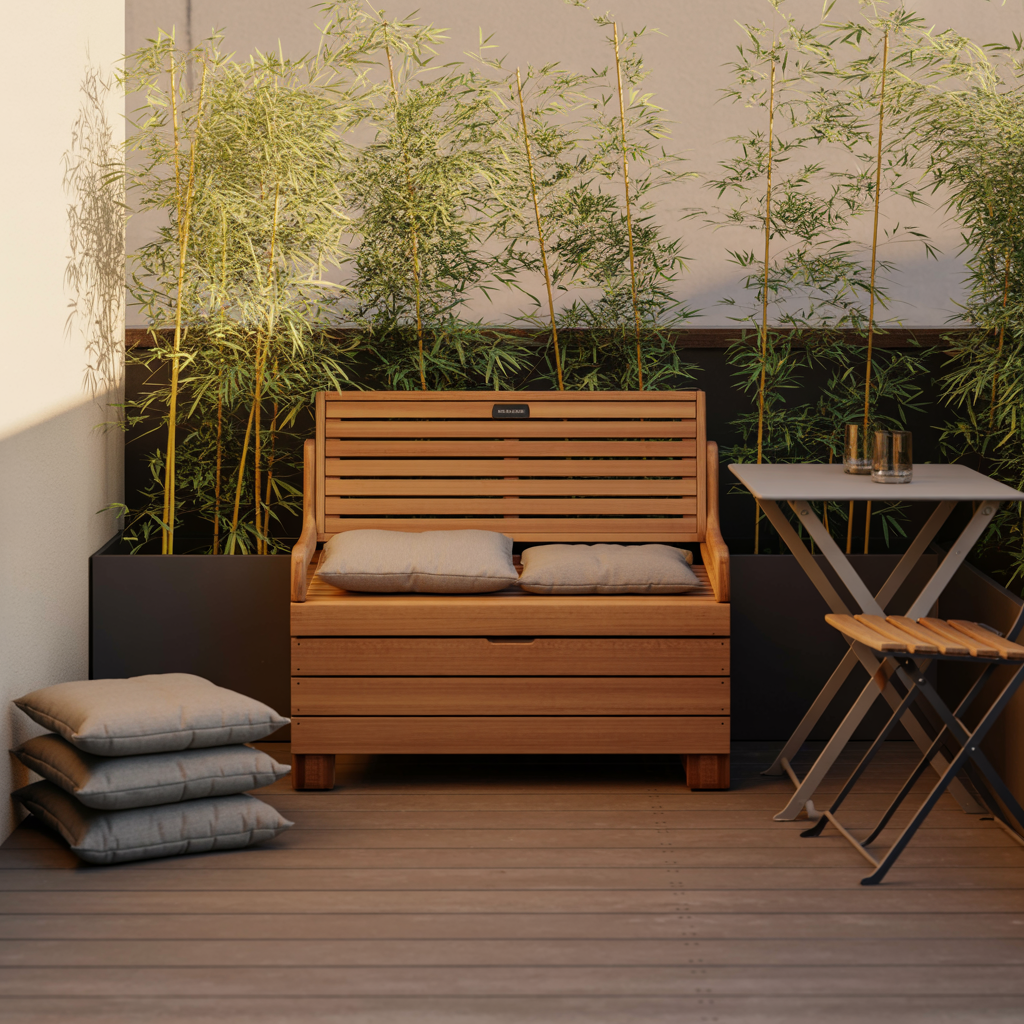
Traditional outdoor furniture often overwhelms small balconies. Multi-functional pieces solve space constraints while providing necessary comfort. Storage benches offer seating plus hidden compartments for cushions, gardening tools, or seasonal decorations.
Folding bistro sets disappear when not needed, leaving floor space for other activities. Look for weather-resistant materials like powder-coated aluminum or treated teak that maintain their appearance with minimal maintenance.
Floor cushions provide flexible seating options that adapt to different group sizes. Waterproof covers protect them from unexpected rain while bold patterns add personality to neutral spaces. Stack them when not in use or arrange them for impromptu gatherings.
Consider weight restrictions if you live in a high-rise building. Many apartment balconies have load limits that affect furniture choices. Lightweight aluminum pieces often provide better value than heavy wooden alternatives while offering similar aesthetic appeal.
3. Transform Ambiance with Strategic Lighting
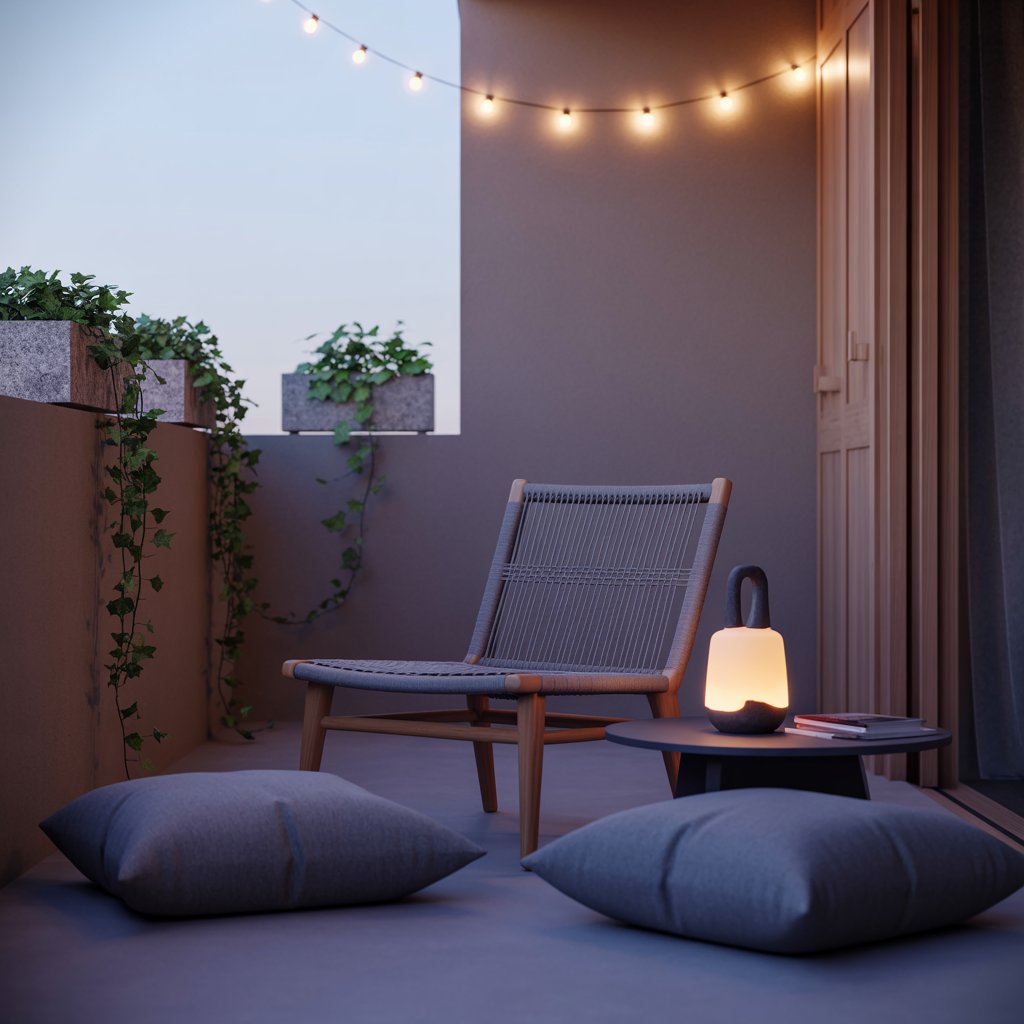
Lighting extends your balcony’s usable hours into evening and creates atmosphere that rivals expensive restaurants. String lights remain popular because they provide warm, diffused illumination that flatters both people and spaces.
Solar-powered options eliminate extension cord concerns while reducing electricity costs. LED varieties last longer and generate less heat than traditional bulbs. Warm white tones create cozy environments while cool white provides task lighting for reading or dining.
Layer different light sources for maximum flexibility. Solar lanterns on tables provide intimate lighting for dinner conversations. Wall-mounted fixtures free up surface space while ensuring adequate illumination for safety.
Consider your neighbors when planning lighting installations. Overly bright fixtures can create complaints and ruin relationships. Aim for soft, downward-directed light that illuminates your space without creating light pollution for surrounding units.
4. Add Instant Style with Weather-Resistant Textiles
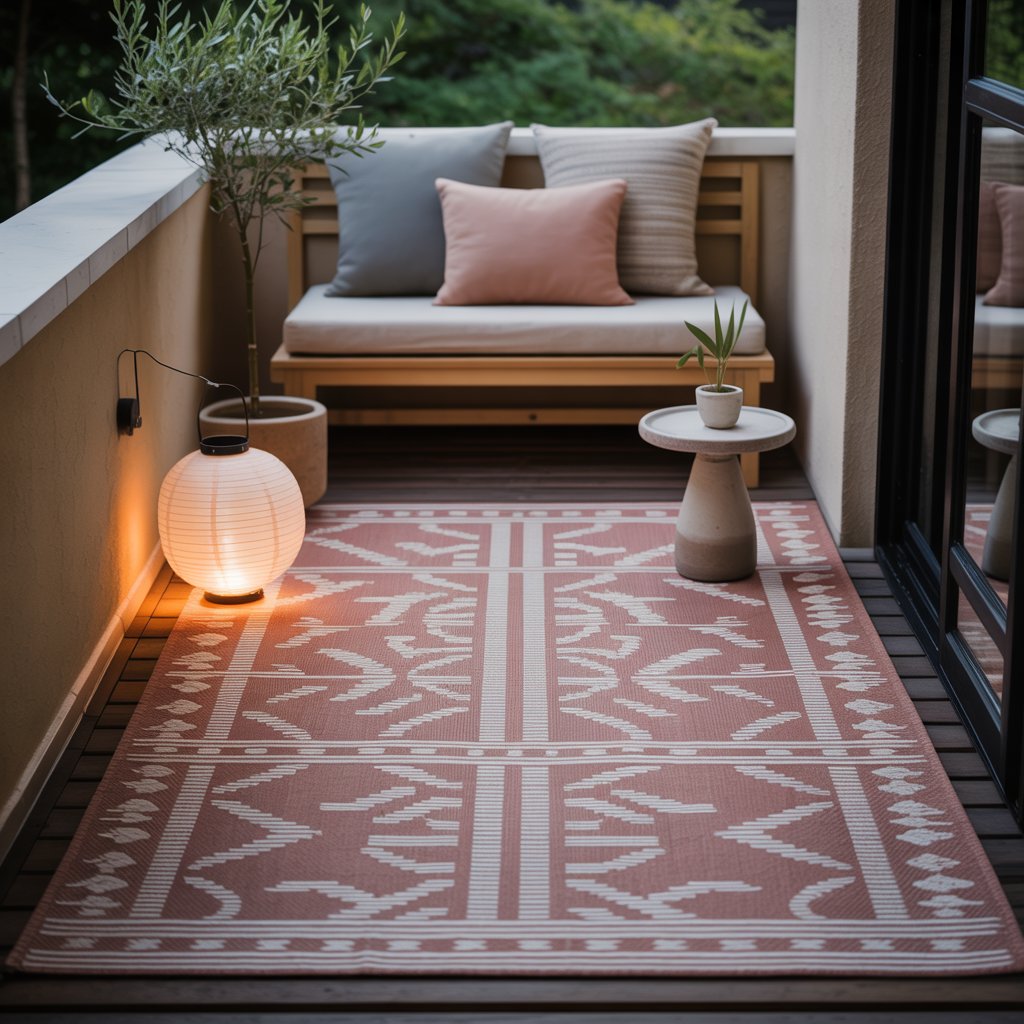
Outdoor rugs anchor seating areas and define different zones within compact spaces. They also provide comfort underfoot and reduce noise for downstairs neighbors. Modern outdoor rugs resist fading, mildew, and staining while offering countless design options.
Choose patterns and colors that complement your interior decor. This creates visual flow between indoor and outdoor spaces, making both areas feel larger. Bold geometric patterns hide dirt better than solid colors, extending time between cleanings.
Cushions and throw pillows introduce comfort and personality without permanent commitment. Mix patterns and textures for visual interest, but stick to a cohesive color palette to avoid chaos. Weather-resistant fabrics dry quickly after rain and resist UV damage from constant sun exposure.
Secure lightweight textiles to prevent wind damage. Weighted corners on rugs and tie-downs for cushions protect your investment while ensuring safety for people and property below your balcony.
5. Bring Life with Container Herb Gardens

Fresh herbs elevate home cooking while adding fragrance and greenery to outdoor spaces. Container gardens work perfectly on balconies because they control soil quality, drainage, and plant spacing better than ground planting.
Start with easy-to-grow varieties like basil, mint, and rosemary. These herbs tolerate varying water conditions and provide immediate rewards for beginning gardeners. Group containers of different heights to create visual interest while ensuring adequate sunlight for all plants.
Self-watering containers reduce maintenance requirements for busy lifestyles. These systems provide consistent moisture levels that many herbs prefer while preventing both drought stress and root rot from overwatering.
Position herb gardens where you can easily access them while cooking. Morning sun with afternoon shade works well for most culinary herbs. Consider aromatic varieties like lavender or lemon thyme that release pleasant scents when brushed against.
6. Create Cozy Atmosphere with Fire Elements
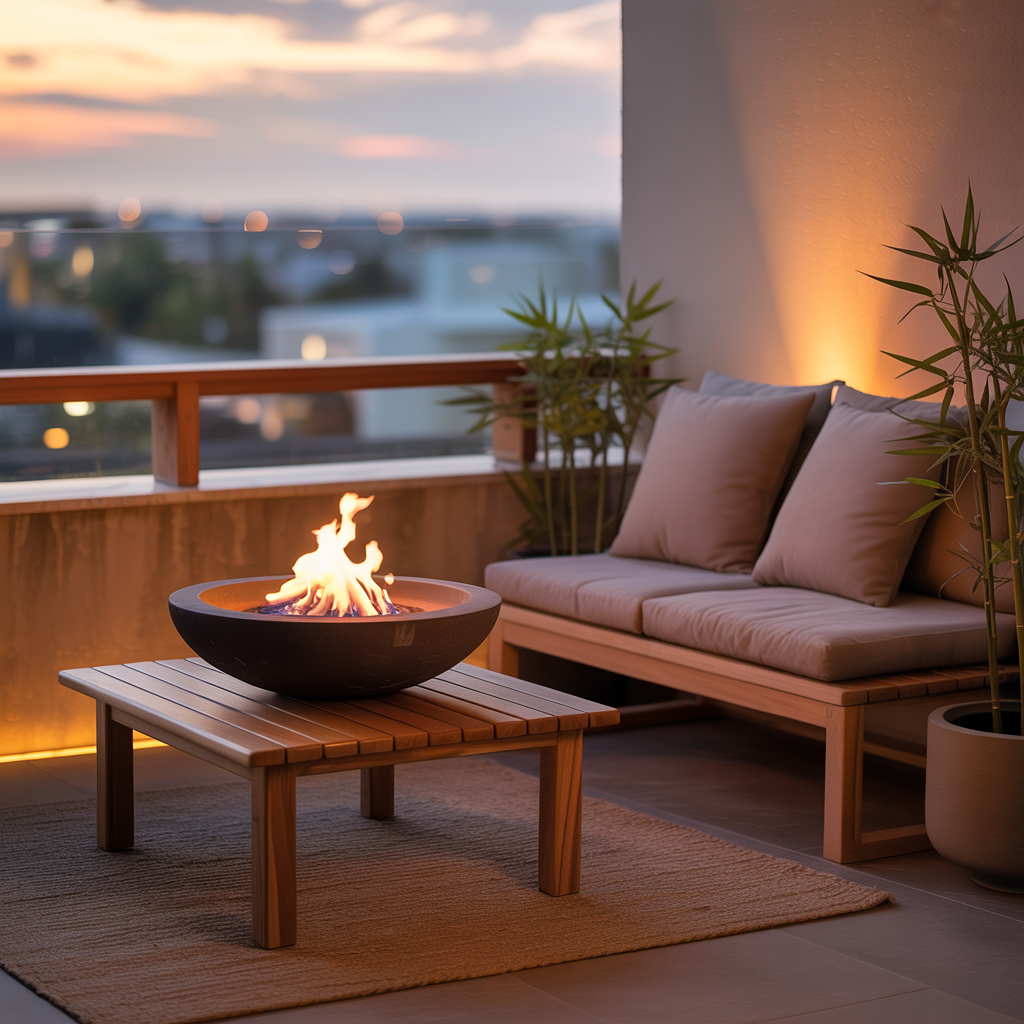
Fire features add warmth and ambiance that extends your balcony season into cooler months. Tabletop fire bowls provide focal points for conversation while offering practical warmth for chilly evenings.
Safety considerations are paramount when incorporating fire elements into small spaces. Ensure adequate clearance from combustible materials and check local regulations regarding open flames on balconies. Many areas allow small, contained fire features while prohibiting larger installations.
Electric and gel fuel options provide flame effects without open fire concerns. These alternatives work well in areas with strict fire codes while still creating the cozy atmosphere that makes outdoor spaces inviting during cooler weather.
Position fire features where they enhance rather than overwhelm your seating arrangement. Central placement works well for round seating configurations, while corner installations suit linear furniture arrangements better.
Bringing It All Together
Successful balcony transformations happen gradually. Start with one or two elements that address your biggest concerns, then add features as budget and experience allow. This approach prevents overwhelming both your space and your wallet while ensuring each addition truly improves your outdoor experience.
Remember that personal style matters more than following trends exactly. Your balcony should reflect your preferences and lifestyle needs. A minimalist might prefer clean lines and limited accessories, while someone who loves entertaining might prioritize flexible seating and ambient lighting.
Regular maintenance keeps your balcony transformation looking fresh and inviting. Weekly watering, monthly cleaning, and seasonal updates ensure your outdoor space remains a source of joy rather than stress. With thoughtful planning and consistent care, your balcony can become the retreat you’ve always wanted.
